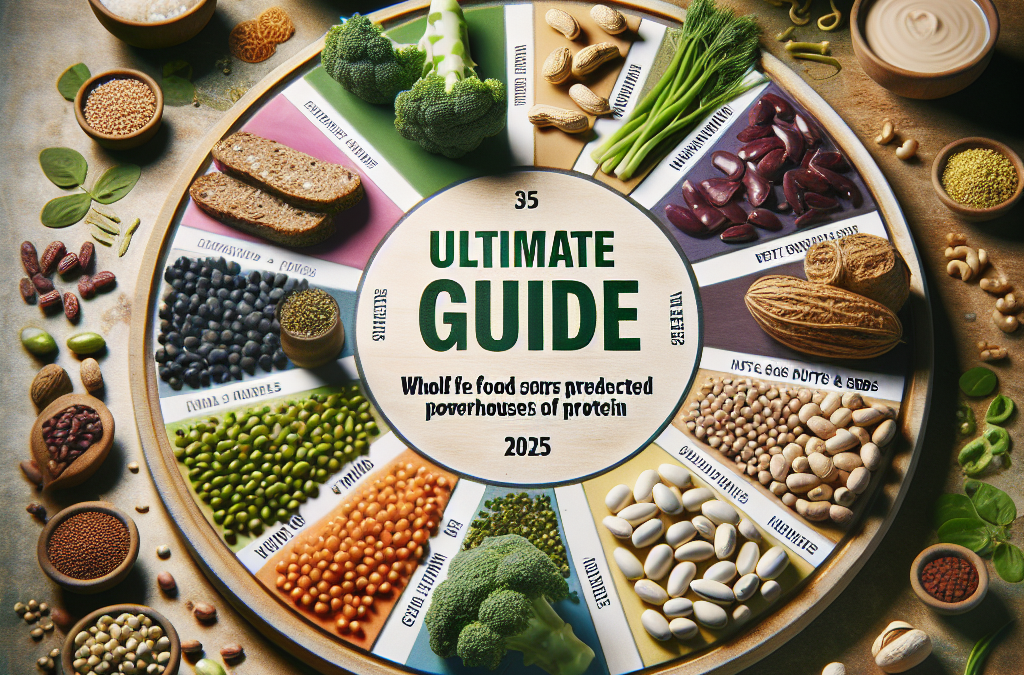1. Organic Chicken Breast
High-Quality Protein with Lean Health Benefits
Organic chicken breast is a staple among whole food protein sources, especially for those seeking lean, versatile options. In 2025, consumers continue to prioritize minimally processed meats that are free from antibiotics and hormones. Chicken breast provides approximately 26 grams of protein per 3-ounce serving, making it ideal for muscle repair and growth.
Choosing organic options ensures you’re getting higher-quality meat, free from pesticides and synthetic additives. Many health experts recommend incorporating organic chicken into your diet at least three times per week for optimal health benefits.
For practical purposes, grilling or baking chicken breast with herbs and olive oil is an easy way to add a nutritious protein source to your meals. Its mild flavor pairs well with vegetables, grains, and salads, making it a versatile staple in your 2025 meal plan.
2. Lentils and Legumes
Plant-Based Powerhouses for Protein
Lentils are among the most popular whole food protein sources for vegetarians and vegans in 2025. They pack around 18 grams of protein per cooked cup and are rich in fiber, minerals, and antioxidants. Their affordability and long shelf life make them a practical choice for sustainable eating.
In addition to their protein content, lentils help regulate blood sugar levels and support digestive health. Mix lentils into soups, salads, or make delicious lentil patties for a hearty meal that supports your nutritional needs.
Recent studies highlight the benefits of legume consumption for cardiovascular health, making them an essential part of a balanced diet for health-conscious consumers.
3. Pasture-Raised Eggs
Complete Protein and Rich in Nutrients
Pasture-raised eggs are one of the most complete whole food protein sources. They provide roughly 6 grams of high-quality protein per egg, containing all nine essential amino acids. Their nutrient density extends beyond protein, offering choline, vitamin D, and omega-3 fatty acids.
In 2025, consumers are increasingly seeking eggs from hens that are free-range and pasture-raised, ensuring better animal welfare and nutrient profile. Incorporating eggs into breakfast or adding them to salads offers a quick, nutritious protein boost.
To maximize benefits, consider eating whole eggs rather than just egg whitesâwell-cooked eggs also support satiety and muscle maintenance.
4. Wild-Caught Tuna
Omega-3 Rich, Sustainability-Focused Protein
Wild-caught tuna stands out as a highly nutritious whole food protein source, containing about 25 grams of protein per 3-ounce serving. Itâs also rich in omega-3 fatty acids, which support brain health and reduce inflammation. In 2025, sustainable harvesting practices have gained prominence, helping ensure that tuna populations remain healthy.
Fresh or responsibly canned tuna can be easily added to salads, sandwiches, or enjoyed as sashimi. When choosing tuna, look for sustainably marked options to minimize environmental impact.
Regular consumption of wild-caught tuna can contribute significantly to meeting your daily protein and omega-3 needs, especially in diets focused on reducing processed foods.
5. Quinoa
Complete Plant-Based Protein for Gluten-Free Diets
Often called a grain, quinoa is actually a seed and one of the few plant-based whole food protein sources that is a complete source of all nine essential amino acids. Providing around 8 grams of protein per cooked cup, it’s perfect for gluten-free and plant-based diets in 2025.
Quinoa is easy to prepare and versatileâuse it as a base for salads, bowls, or side dishes. Its mild flavor blends well with vegetables, herbs, and spices, making it a popular choice for variety in the diet.
Moreover, quinoa is rich in fiber, magnesium, and antioxidants, supporting overall health and longevity in modern diets focused on whole foods.
6. Cottage Cheese
Rich in Protein and Low in Fat
Cottage cheese remains a favorite whole food protein source, especially among fitness enthusiasts. With around 14 grams of protein per half-cup serving, itâs ideal for muscle synthesis and recovery. Its low fat and calorie content make it a good choice for weight management in 2025.
Get an Amazing Discount on the Best Certified Organic Whole Food Supplement!
Full-fat, low-fat, or fat-free options provide flexibility depending on your dietary goals. Cottage cheese can be eaten plain, mixed with fruits, or added to savory dishes like lasagna or baked casseroles.
Incorporating cottage cheese regularly can support your protein intake without relying on highly processed protein powders, aligning with the trend toward whole food sources.
7. Chia Seeds
Small Yet Mighty Whole Food Protein Sources
Chia seeds are tiny but pack a significant amount of proteinâabout 4.7 grams per 2-tablespoon servingâalong with fiber, omega-3s, and antioxidants. They are an excellent addition to smoothies, oatmeal, and gluten-free baked goods in 2025.
Their gel-forming ability when soaked makes them a natural thickener and a nutritious way to add plant-based protein to your diet. Moreover, chia seeds support hydration and sustained energy release.
For plant-based eaters, chia seeds can be an essential component of a balanced diet, providing vital nutrients that complement other whole food protein sources.
8. Organic Tofu
Versatile, Plant-Based Protein Power
In 2025, organic tofu remains a top choice among whole food protein sources for vegetarians and vegans. Providing about 10 grams of protein per half-cup serving, tofu is a complete plant-based protein derived from soybeans.
Its neutral flavor makes it highly adaptableâfermented, grilled, stir-fried, or blended into smoothies. Organic options ensure minimal chemical exposure and support sustainable farming practices.
Including tofu in your weekly meals can help diversify your protein sources and support plant-based dietary goals while delivering healthful nutrients.
9. Wild-Caught Salmon
Heart-Healthy, Rich in Complete Protein
Salmon remains a flagship among whole food protein sources in 2025 due to its impressive nutritional profile. One 3-ounce serving offers around 22 grams of complete protein, plus high levels of omega-3 fatty acids that boost cardiovascular health.
Choosing wild-caught salmon supports sustainable fishing practices, and it can be prepared in many waysâfrom baking to grillingâadding flavorful, nutrient-dense meals to your diet.
Regularly consuming salmon aligns with dietary guidelines emphasizing whole food sources to promote longevity and reduce chronic disease risk.
10. Nuts and Seeds
Healthy Fats and Protein in Every Bite
Nut and seed varieties like almonds, walnuts, pumpkin seeds, and sunflower seeds are powerful whole food protein sources. They provide about 5-7 grams of protein per ounce, along with healthy fats, fiber, and micronutrients.
Consuming a handful of mixed nuts or seeds daily supports satiety and helps meet daily protein goals without processed snacks. Their portability makes them perfect for busy lifestyles in 2025.
Including nuts and seeds as part of your diet promotes a balanced intake of essential fatty acids and plant-based proteins, reinforcing the importance of diverse whole food protein sources.
FAQs about Whole Food Protein Sources in 2025
- 1. Why are whole food protein sources better than processed protein powders?
- Whole food protein sources provide a wide range of nutrients, fiber, and natural enzymes that processed powders often lack. They contribute to better digestion, satiety, and overall health.
- 2. How can I incorporate more whole food protein sources into my diet?
- Start by adding a variety of options like eggs, beans, nuts, and fish to your meals. Planning balanced meals around these foods ensures consistent intake of whole food proteins.
- 3. Are plant-based whole food protein sources sufficient for muscle building?
- Yes, when consumed in adequate quantities and combined properly, plant-based sources like quinoa, lentils, and tofu can support muscle synthesis effectively.
- 4. What is the best way to select sustainable whole food protein sources in 2025?
- Look for certifications like organic, wild-caught, or sustainably farmed labels, and buy from reputable sources that prioritize environmental responsibility.
- 5. Can incorporating whole food protein sources help with weight management?
- Absolutely. Whole food proteins promote satiety, stabilize blood sugar, and provide essential nutrients without excess additives, aiding in healthy weight control.
Conclusion
As we navigate 2025, understanding and prioritizing the best whole food protein sources is essential for maintaining optimal health, supporting sustainable practices, and achieving dietary goals. From lean animal proteins like organic chicken breast and wild salmon to plant-based options like quinoa, lentils, and chia seeds, the diversity of whole food protein sources allows for flexibility and nourishment in every meal. Embracing these options ensures you’re fueling your body with natural, nutrient-dense foodsâmaking the importance of whole food protein sources undeniable for a vibrant, healthy future.




